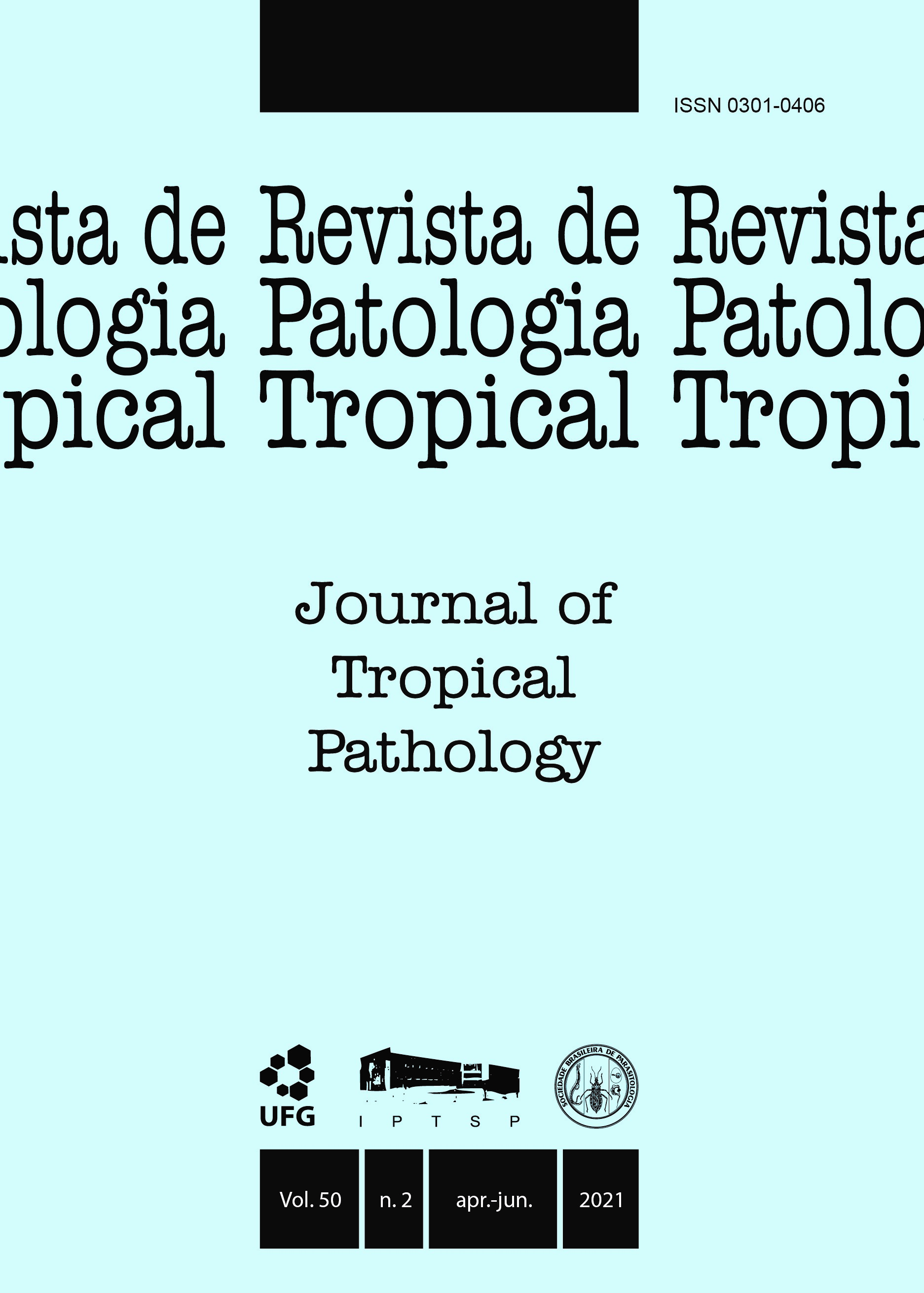TRYPANOSOMA spp. in captive primates in a brazilian zoo
DOI:
https://doi.org/10.5216/rpt.v50i2.69303Abstract
Captive animals, despite the constant care provided, are susceptible to infections from different sources. We herein report the natural trypanosome infection of 11 (28.2% positive) out of 39 non-human primates from 13 different species, in a Brazilian zoological park. Immunofluorescent antibody test (IFAT) and conventional polymerase chain reaction (cPCR) ruled out Trypanosoma cruzi, the etiological agent of Chagas disease. However, sequencing performed with positive samples employing hsp70 primers revealed similarities from 86% to 88% to diverse trypanosomes, including T. cruzi, Trypanosoma grayi, Trypanosoma lewisi, Trypanosoma rangeli and Trypanosoma vivax. We believe that the low similarity values obtained by sequencing reflect the difficulties in the molecular identification of trypanosomes, which share a large portion of their genetic material; this similarity may also preclude the diagnosis of co-infection by more than one trypanosome species. Thus, our study demonstrates the presence of diverse trypanosomes in primates, which are susceptible to infection by these parasites. Mechanical devices such as windows and bed nets, etc., are required to avoid vector insects in these environments, in addition to preventive quarantining of animals recently introduced into zoos. Therefore, investigation of the parasites in both the animals already residing in the zoo and those being introduced is of paramount importance, although no easy task.
KEY WORDS: Non-human primates; monkey; diagnosis; trypanosomes.
Downloads
Downloads
Published
How to Cite
Issue
Section
License
The manuscript submission must be accompanied by a letter signed by all authors stating the full name and email address, confirming that the material has not been published or is under consideration for publication elsewhere, and agreeing to transfer copyright in all media and formats for Journal of Tropical Pathology. The authors will not be paid for published articles. They are solely responsible for the content of those articles, even if the Editor holds the right to adjust them to the norms of the journal.
The reviewers will not be paid for the peer review process.

